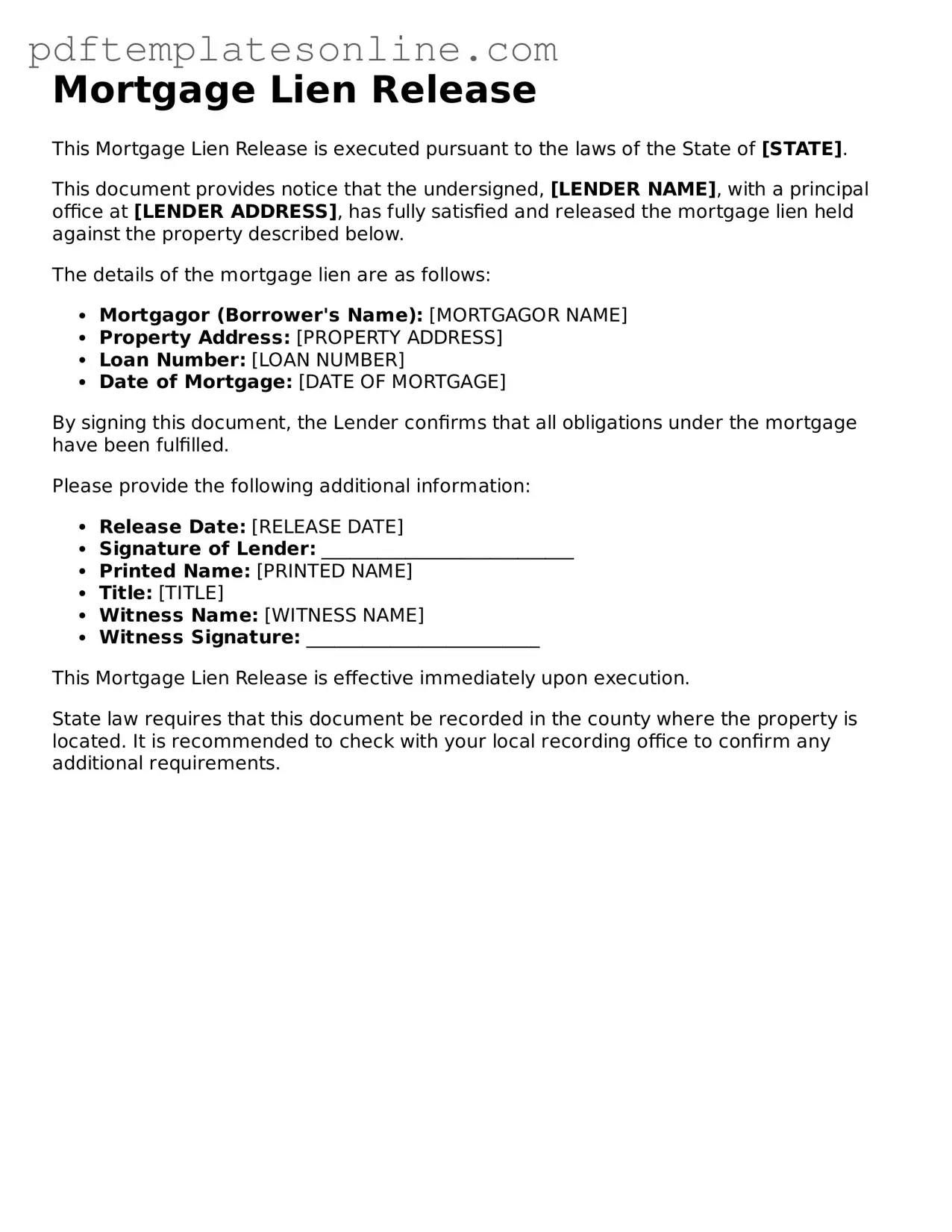Filling out a Mortgage Lien Release form can seem straightforward, but many individuals make common mistakes that can lead to delays or complications. One prevalent error occurs when the borrower fails to provide accurate property information. It is crucial to ensure that the property address and legal description match exactly what is recorded in public records. Any discrepancies can lead to confusion and potential legal issues down the line.
Another frequent mistake involves omitting signatures. Both the borrower and the lender must sign the form for it to be valid. If either party neglects to sign, the release will not be processed, leaving the lien in place. It’s essential to double-check that all required signatures are present before submitting the document.
People often overlook the importance of the date. Failing to date the form correctly can result in complications regarding when the lien is officially released. This date is significant because it can affect the timing of subsequent transactions involving the property.
Inaccurate or incomplete notary information is another common pitfall. Many people forget that the Mortgage Lien Release must be notarized to be legally binding. Without a proper notary acknowledgment, the form may be rejected. Ensuring that the notary's information is complete and accurate is vital for the validity of the release.
Some individuals mistakenly believe that they can submit the form without any supporting documentation. In many cases, lenders require additional paperwork to accompany the release form, such as a payoff statement or proof of payment. Not including these documents can lead to delays in processing the release.
Additionally, individuals sometimes fail to check for outstanding liens or judgments against the property. If there are unresolved issues, the release may not be granted. It’s wise to conduct a thorough title search before submitting the form to avoid unexpected complications.
Another mistake involves submitting the form to the wrong office. Each jurisdiction has specific requirements regarding where to file a Mortgage Lien Release. Sending the form to the incorrect location can lead to unnecessary delays. Understanding local filing procedures is crucial for a smooth process.
People may also forget to keep copies of the submitted form and any accompanying documents. Maintaining records of what was submitted is important, as it provides proof of the release and can be helpful in case of future disputes.
Some individuals rush through the process without reading the instructions carefully. Each form may have specific requirements or variations depending on the lender or state. Taking the time to read and understand these instructions can prevent many common errors.
Lastly, failing to follow up after submission can lead to uncertainty about the status of the lien release. It is advisable to check in with the appropriate office to ensure that the form has been processed and the lien has been officially released. This proactive approach can help individuals avoid potential issues in the future.
